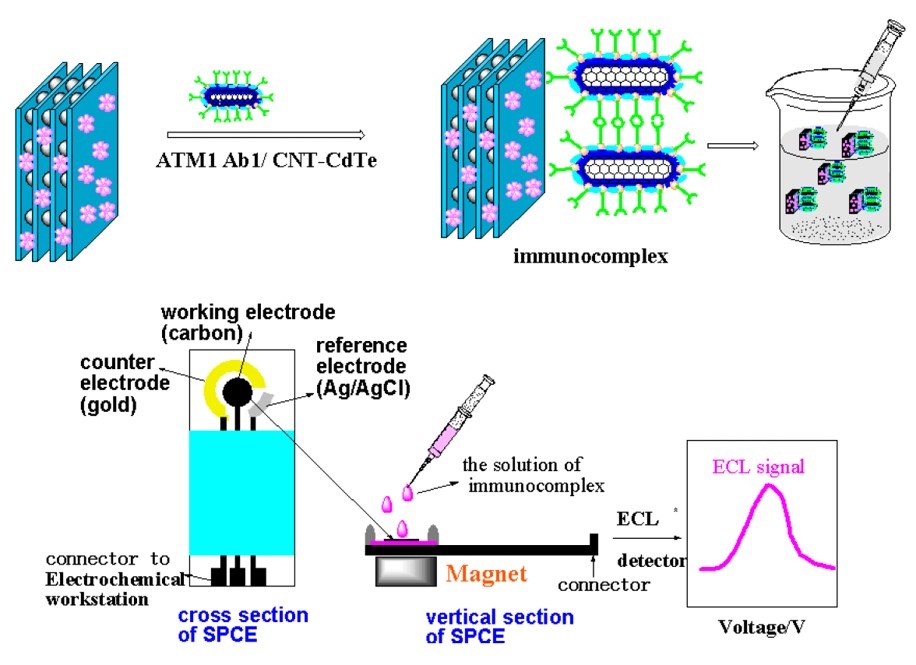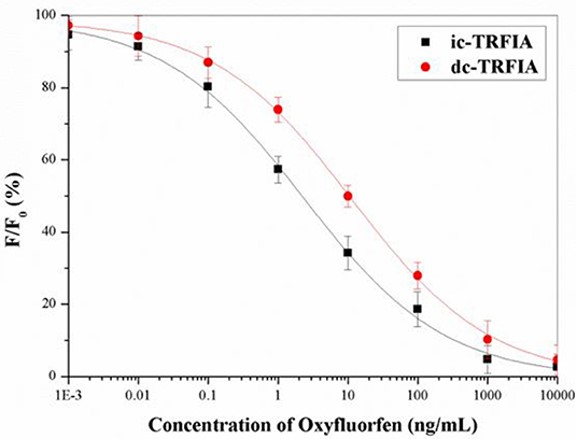With vast experience and leading technology platforms, Creative Biolabs is capable of offering a series of high-quality antigen and antibody conjugation services for worldwide customers. In addition to custom antibody conjugation service, we also provide special labeling services to meet every client’s specific requirements. Our experienced experts will work closely with you to make your programs a success.
In recent years, reactive dyes labeled with electrochemiluminescent moieties have been widely used in fields such as medical diagnostics, environmental analysis, and food safety monitoring, especially when sensitive, reliable and reproducible detection of biomolecules is a requirement. The most two efficient electrochemiluminescences (ECL) reactions to date are related to Europium and Ruthenium. In particular, these laser excitable metal-ligand complexes have longer fluorescence lifetime when compared with traditional fluorophores, such as fluorescein and rhodamine, which enable both time-gated as well as time-dependent measurement. Most importantly, the reaction is rapid and occurs under mild conditions.
 Fig.1 Weakly oxidized europium.3
Fig.1 Weakly oxidized europium.3
Due to the rich experience of antigen and antibody conjugation, Creative Biolabs now offers labeling and testing of multiple combinations of antibodies to help you rapidly identify the targeted receptor. Our professional biology scientists have worked in the market of biomarker detection for many years. Except for special labeling services, additional custom conjugations with customer supplied protocols are also available as an extension of our antibody production and purification projects or as a stand-alone service. Thus, we can ensure that the special labeling services provided by us will greatly promote the development of your programs.
Creative Biolabs is committed to providing high-quality IVD antibody development services for worldwide customers. With rich experience and longtime expertise, we can offer valuable bioconjugation services in your development of diagnostics, bioassays as well as drug formulations. No matter which fields you are working, we are here for help. Importantly, our experienced scientists can assist you to select the most appropriate label methods for your research.
If you are interested in learning more about Creative Biolabs’ special labeling service, please feel free to contact us and get exclusive technical support services. Our project manager will get in touch with you within 24 hours and help you design an appropriate labeling method for your specific requirements.
1. Magnetic Graphene-Based Extraction and Antibody-Labeled CdTe QDs Detection Electrochemiluminescent Immunoassay
 Fig.2 The sandwich ECLIA procedure for detection of ATM1.1
Fig.2 The sandwich ECLIA procedure for detection of ATM1.1
In this work, researchers presented an ultrasensitive electrochemiluminescent immunoassay (ECLIA) for detecting aflatoxin M1 (ATM1) in milk. The assay utilized magnetic Fe3O4-graphene oxide (Fe-GO) as an absorbent and antibody-labeled CdTe quantum dots (CdTe QDs) as signal tags. Fe3O4 nanoparticles were immobilized on graphene oxide to form magnetic nanocomposites for ATM1 adsorption and extraction. The primary antibody (ATM1 Ab1) was conjugated with CdTe-carbon nanotube nanocomposite to create the signal tag for detection. The method demonstrated exceptional sensitivity for detecting ATM1 in milk, achieving a detection limit of 0.3 pg/mL, making it suitable for dairy industry labs. Compared to ELISA, it offered improved sensitivity, faster analysis time, and simpler sample preparation, making it ideal for rapid, high-throughput screening of mycotoxins in food.
2. Sensitive Time-Resolved Fluorescence Immunoassay Based on the Combination of Europium with the Anti-Oxyfluorfen Monoclonal Antibody
 Fig.3 The standard curve of TRFIA for oxyfluorfen.2
Fig.3 The standard curve of TRFIA for oxyfluorfen.2
In this paper, lanthanide europium (Eu) with autofluorescence properties was chosen as a marker to label the monoclonal antibody of oxyfluorfen for developing two time-resolved fluorescence immunoassays (TRFIA): direct competition (dc-TRFIA) and indirect competition (ic-TRFIA). The methods were applied to analyze both spiked and real samples, with results correlated to gas chromatography-electron capture detection (GC-ECD) for accuracy verification. The developed TRFIA methods demonstrated high precision and reliability for detecting oxyfluorfen residues. This ultrasensitive, rapid, cost-effective approach offers a promising tool for high-throughput screening and monitoring oxyfluorfen for environmental and agricultural products.
References
For Research Use Only.
